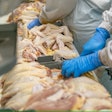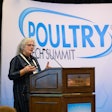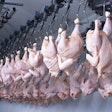
Next-generation sequencing (NGS) techniques could help speed routine testing for Salmonella, Listeria and other pathogens during poultry processing, reducing the incidence of foodborne illnesses.
More than 48 million Americans get sick from a foodborne illness each year and 3,000 people die as a result, the Center for Disease Control and Prevention (CDC) estimates. Poultry meat that is contaminated with salmonella or other pathogens, chemicals or toxins is the underlying cause of 19% of deaths attributed to foodborne illnesses.
“DNA is a string made up of four building blocks, A, T, C and G. DNA sequencing is the process of deciphering the identify and order of those building blocks,” explained Sasan Amini, PhD, Co-founder and CEO, of Clear Labs. “Next-generation sequencing is a massively parallelized DNA sequencing technique. Instead of generating one data point per experiment, we can generate hundreds to thousands to hundreds of thousands of data points per experiment.”
NGS overcomes the limitations of previously used polymerase chain reaction (PCR) techniques. PCR serotyping services require a bacterial isolate of the target pathogen, with results taking 3-5 days. In contrast, the NGS technique skips the bacterial culturing step, reducing the turnaround time to less than 24 hours and enabling more timely decisions and corrective actions.
“In many cases, food is perishable, so the results need to be ready quickly or they are useless,” Amini said.
Applications within NGS
Several applications, including whole genome sequencing and targeted sequencing, fall under the umbrella of next generation sequencing.
“One application of NGS is whole genome sequencing, which analyzes every single building block in a sample,” Amini said.
Whole genome sequencing provides comprehensive data about any pathogens found in a sample. Food safety experts can use this information to identify the ingredient, geographic region and even processing facility responsible for an outbreak.
Another method is targeted sequencing, which scrutinizes a smaller portion of DNA compared to whole genome sequencing. This technique costs the same as PCR testing, making it ideal for routine testing.
“Targeted sequencing is also very sensitive. I describe it as ‘just enough information,’ meaning that it gives you the confidence that it won’t give you false positives,” he added.
Like what you just read? Sign up now for free to receive the Poultry Future Newsletter.


















